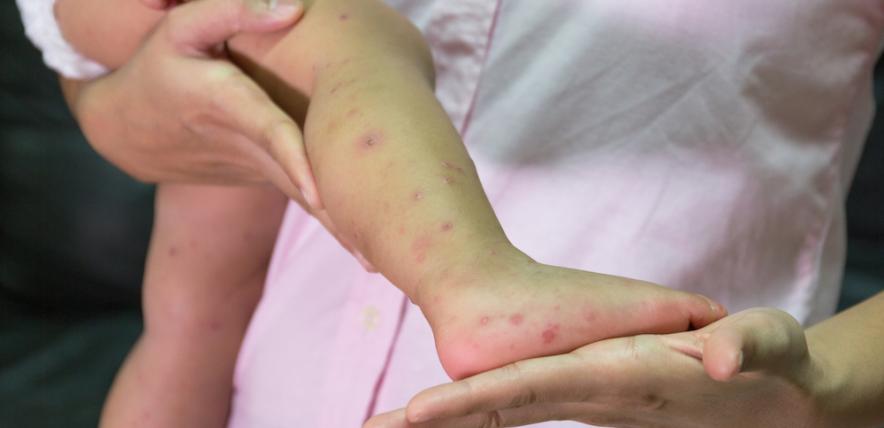What is hand, foot and mouth disease?
Hand foot and mouth disease is a common infection, particularly in young children and usually affects those aged under 10 years.
Despite the similarity in name it is not related to foot and mouth disease, which affects cattle, sheep and pigs.
Is hand foot and mouth disease contagious and how is it spread?
As with many childhood illnesses, it is spread through close contact with others, for example, by coughing and sneezing, saliva or through poo if a child hasn’t washed their hands properly.
A child with hand, foot and mouth is contagious in the days before they are symptomatic but they will most contagious for the first five days of the illness once symptoms are apparent.
Your child’s nursery or early years setting will ask you to keep them away until they’ve recovered.
What causes hand foot and mouth disease and what are the symptoms?
The disease is caused by viruses from the Enterovirus family, most commonly the coxsackievirus, and is characterised by a number of symptoms which develop between three and five days after exposure to the infection.
Among the first of these will be a high temperature, a loss of appetite, tummy pains, coughing and a sore throat and mouth. Your child will also generally be feeling unwell and unlikely to be themself.
After a couple of days, ulcers or red spots appear on the tongue and in the mouth, and these then develop into large yellowy-grey sport with red edges. They can be very painful and make eating, drinking and swallowing difficult. Normally, these pass within a week.
Once the mouth ulcers appear, your child may also get a rash on the fingers and hands, as well as soles of the feet and sometimes on the buttocks and groin area, which may turn in little blisters with a grey centre. These can be itchy, and will last around 10 days.
If you need a diagnosis of hand, foot and mouth disease then you should see your doctor however they are unlikely to be able to do much to help.
Is there a cure for hand foot and mouth disease?
There is no cure, and the illness will usually pass in a week to 10 days. What you can do is to make your child more comfortable and to ease their symptoms until the infection has run its course.
Give your child plenty of fluids so they don’t become dehydrated. Water and milk are best. Soft foods such as yoghurt, mashed potatoes and soups will be easier to swallow on a sore throat but hot, spicy or acidic food should be avoided.
Paracetamol and ibuprofen will ease aches and pains, but don’t give aspirin to children under the age of 16.
Gargling with warm, salty water can relieve the discomfort of mouth ulcers. However, make sure your child doesn’t swallow the solution.
How do you prevent hand foot and mouth disease from spreading?
To try to prevent the infection from spreading use tissues when coughing and sneezing, and try to make sure hands are washed well after toilet visits, changing nappies and before preparing food.
Don’t use the same cups, towels and clothes as anyone who is infected and wash bedding separately on a hot water cycle.
A trip to your GP may be required if your child’s symptoms are particularly bad.
For example, if they’re unable or unwilling to drink fluids and you think they might be dehydrated, or are having fits or seizures, then seek medical help.
Equally, you should see your doctor if there is a discharge from the blisters or your child has a constant fever.
There may also be cause for concern if there is no sign of recovery after 10 days.
Hand, foot and mouth disease has many strains, so having it once will not necessarily mean your child won’t get it again.
Further reading:
Written by Dorothy Lepowska-Hudson for the Alliance
This article is for information purposes only and should not be used as a substitute for professional medical help. If you or your child is unwell you should consult a medical professional.
Where next?
How to treat your child's eczema







